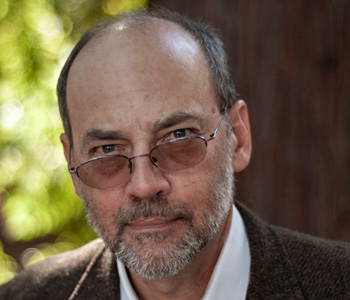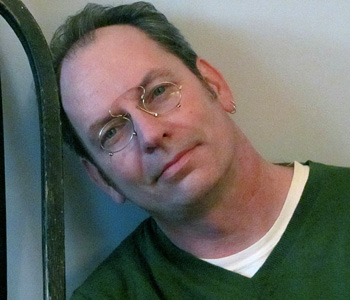Paul Wapner
Living through the End of Nature: The Future of American Environmentalism
MIT Press
184 pages, 8¼ x 6 inches
ISBN 978 0262014151
Nature is hard to find these days. Six and half billion people spread across the entire planet draw so many resources from the earth and emit so much waste into the air, water, and soil, that humanity’s signature is now everywhere. There are no places anymore devoid of human influence. Moreover, we are finally realizing that nature means different things to different people; one person’s endangered species is another’s dinner. Thus the protection of nature is not as easy as we used to think.
Living through the End of Nature explores the meaning of American environmentalism “after nature.” I argue that environmentalists need not lament the end of nature but should welcome it as an opportunity to build a more effective political movement.
One can appreciate this opportunity by recognizing how the end of nature shifts the political fault-lines that have long defined American environmental politics.
Environmentalists and their critics argue not simply about the virtues of protecting given plots of land, protecting sources of water, or addressing climate change. At a deeper level, they contest how humans should relate to the more-than-human world. Environmentalists call on us to harmonize our lives with nature. We should live within the earth’s ecological limits and look to nature for how best to live. Critics counsel mastering nature—outsmarting it for human betterment.
In this book I show how the end of nature undermines both of these positions, and explain how environmentalists can capitalize on such new conceptual and political terrain.

Environmentalism in a post-nature age involves finding a middle path that recognizes that all life is now on a co-evolutionary trajectory in which the human and nonhuman worlds shape one another.
I am not the first to suggest the end of nature. Close to two decades ago, Bill McKibben announced that climate change spells the empirical end of nature, and more recently William Cronon and others have explained the conceptual end of nature insofar as our understandings of the nonhuman world are fundamentally social constructs.
Strangely, the environmental movement has been largely tone-deaf to these insights.
Part of the reason for this is that the end of nature has an abstract quality to it that makes many environmentalists nervous. They see dwelling on questions about the end of nature as largely navel-gazing which will send the movement into a philosophical tailspin from which it may never recover. While, in the meantime, there is much work to do in protecting wild places and the ecological integrity of the earth. In fact, many environmentalists have been downright hostile to arguments about the end of nature because they see it as a distraction.
I see things differently. The end of nature provides the chance for environmentalism to regroup and refashion itself to be more politically relevant in the 21st century.
Let’s face it: after enjoying a few decades of public prominence, the movement now faces significant challenges to its ability to advance environmental protection and sustainability. These days, in the shadow of global economic recession, battered by industry interests that see its message as anathema to corporate wellbeing, and simply outmaneuvered by powerful social forces, environmentalism is fighting for its life.
In my view, environmentalism can regain its momentum by resetting its compass, thinking afresh about its ultimate aims, and practicing a type of politics that can more successfully engage anti-environmental voices. Environmentalism can do this by relaxing its ideological subscription to the concept of nature and admitting its own attraction to human capabilities.
As an environmentalist, I love the woods and my iPod. I work to harmonize my life with the more-than-human world, and concomitantly take advantage of the technological and other marvels human civilization provides. The book explains how this complex orientation is actually more honest—and thus how it can advance environmentalist efforts.
I contrast the “dream of naturalism,” which most environmentalists practice, from the “dream of mastery,” which most critics subscribe to. (In the latter vision, the human being is supreme and we should thus celebrate humanity’s ingenuity, technological prowess and rationality above any virtues “nature” may have.)
The end of nature undermines both of these orientations. Neither environmentalists nor their critics can appeal to a given nature, human or otherwise, to justify their politics.
I show how environmentalism in a post-nature age involves finding a middle path that recognizes that all life is now on a co-evolutionary trajectory in which the human and nonhuman worlds shape one another. The book explains how the movement can chart a future premised on such complexity—and how doing so can enable environmentalism to be more inclusive and better able to refine its critical edge and message.
Specifically, I offer policies to address the loss biological diversity and climate change.
With regard to biodiversity, I criticize those who call on humans simply to fence off wildlands and assume that this will protect wildness or even necessarily boost biodiversity. I outline ways to “manage wildness” on behalf of ecological and social health.
With regard to climate change, I criticize those who call on us to get out of the greenhouse gas business—that we should simply stop using fossil fuels and shrink our carbon footprint. Rather, I explain how we must explore technological means of harnessing energy that involve lots of human manipulation of the more-than-human world.
In both cases, while I counsel relaxing the boundary between humans and “nature,” I explain the limits of such relaxation and how we can guard against adopting a mastering orientation.
After illustrating what postnature environmental politics can look like with regard to biological diversity and climate change, I explain the psycho-ethical and spiritual qualities of postnature environmentalism. I take up the question of how we should fashion our lives as environmentalists in an age when nature is no longer the Rosetta stone of the movement.
I would want a casual reader to focus on the last chapter, “Being an Environmentalist: Decisive Uncertainty and the Future of American Environmentalism.”
Here I explain that, without nature, environmentalism becomes a practice in uncertainty. Without a secure philosophical and empirical foundation, environmentalism must begin to live in a world without gods, a world in which decisions about how best to live are worked out in the midst of collective life. Specifically, they are worked out in the tension that exists between the dual dreams of naturalism and mastery.
In the last chapter, I recommend that we work on behalf of environmental wellbeing by fashioning ourselves as parents toward the more-than-human world.
As parents, we both mold and behold our children. We shape how they understand and experience the world, and marvel at their own otherness. Our children, then, are an amalgam of their own selfhood and our influence on them—as well as many other things. We should intervene in their lives in ways that enhance their own as well as our wellbeing.
Likewise, we should recognize that, whether we like it or not, we are constantly shaping the nonhuman world—and we should do so in ways that both mold and behold that world. We should relate to it in a way that takes seriously the co-evolutionary character of contemporary earthly affairs, and seeks a middle path through the urge toward naturalism and mastery.

Neither environmentalists nor their critics can appeal to a given nature, human or otherwise, to justify their politics.
Living through the End of Nature offers a nuanced look at our contemporary challenges as environmentalists—both collective and personal challenges. So my hope is that environmentalists will read it and wrestle with its implications.
I believe the book can provide some solace for those of us who overwork ourselves in a frenzied anxiety to “save the planet,” and inspire those of us who are paralyzed by the immensity of our collective, environmental work to reengage on behalf of all life. Along these lines, the book can help to the degree it provides an honest and humble path toward a green, just future.




We don't put paywalls. We don't distract you with ads. We don't sell your data.
Please help to keep this running!